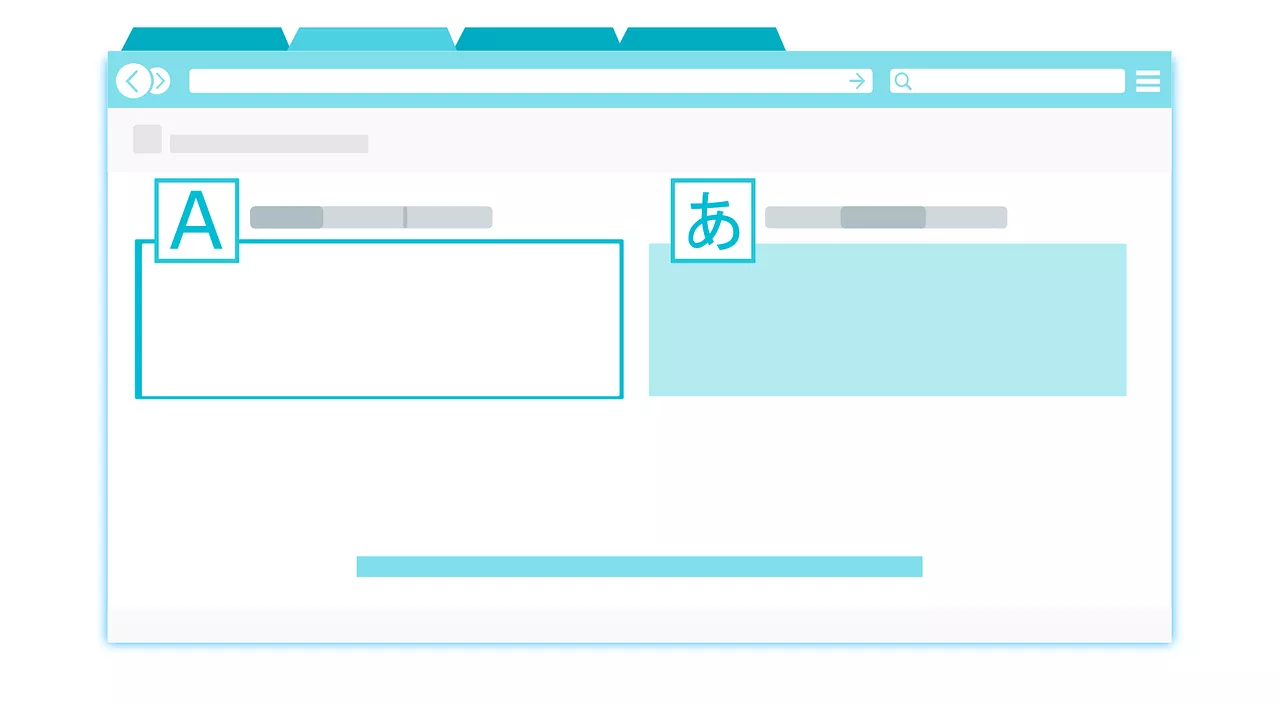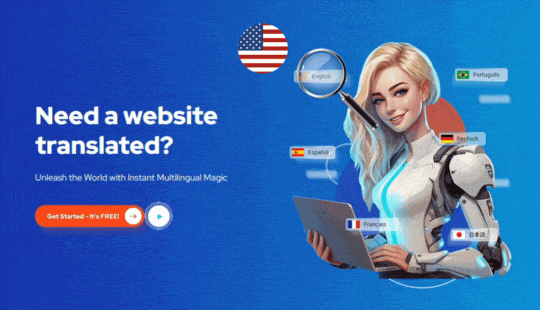
Have you ever heard of the term Globalization 4.0? It’s the revamped name for the infamous globalization process that we haven’t stopped hearing about since the term was coined. The name is a clear reference to the digitalization process and the fourth industrial revolution and how the world is becoming a computer.
This is relevant to our articles topic since we need a paradigm shift regarding our perception of the online world.
Globalization vs Localization
Knowing that these two processes coexist simultaneously may sound confusing since they are complete oposite, but they clash constantly and the predominant one depends hugely on the context and goal.
On the one hand, globalization could work as a synonym of connectivity, sharing and finding common ground despite large distances and diferences, communication, and all kinds of exchanges between people.
On the other hand, localization is all about knowing the minute details that separate a specific community from the rest of the world. If you want to think of the scale these two work at, localization is a beloved hole-in-the-wall restaurant and globalization would be represented by Starbucks.
The differences are staggering. Think of their impact, compare them locally and worldwide, think of their reputations, their fame, the standardization of the processes.
If we think of a middle ground between localization and globalization or if we fuse them, we would get “glocalization” which doesn’t sound like a word at all, but we have seen it in action. Glocalization is what happens when you get an international store with content that is slightly differentiated by country and in the target country’s language. We are dealing with small adaptations.
Glocalization is dead. Long live localization
Let’s call it, globalization is over, nobody wants it in its current form anymore. What everyone is looking for as internet users is a hyperlocal experience, they want to buy “locally” and they want to see themselves as a coveted audience, with content made for them.
Here is where translation steps in
Translation is one of the tools through which localization is achieved, after all, overcoming the language barrier is one of the largest obstacles.
Translation is really useful as it takes a message from one language and reproduces it in a different one, but something will be missing, it’s effect will be too general since there is also a cultural barrier present.
The role of localization is to focus on and fix all the faux pas you get when the colors, symbols and word choices remain too close or identical to the original. There is a lot of meaning hidden subtextually, all these factors are at play with cultural connotations that may be very different to those of the source culture and they also need to be adapted.
How does the process work?
Translate to a different culture
You must think locally, language depends a lot on location. This becomes clearer when we think of languages with the most amount of speakers and all the countries where it is the official language, but this also applies to smaller contexts. The language will have to be carefully considered and all word choices have to fit seamlessly into the target locale or they will stand out like a sore thumb and look overall awkward.
At ConveyThis, we are localization experts and have worked on numerous challenging localization projects because this is what we are passionate about. We work together with automatic translation because it’s a fine tool with great potential but we are always eager to dive in and start working with the functional preliminary translation and turn it into something great.
There are many aspects to work in when there is a localization project, such as how to adequately translate humor, colors with equivalent connotations, and even the most appropriate way to address the reader.
Dedicated URLs for different languages
There is no need to make separate websites for each of your languages, it would turn the simplest process into one of the most time and energy consuming.
There are several options for creating parallel websites, each in a different language, the most widely used are subdirectories and subdomains. This also links all your website together inside a “folder” and search engines will rank you higher and have a clearer understanding of your content.
If ConveyThis is your website translator, it will automatically create your preferred option without you having to do any complex coding and you save a lot of money since you won’t be purchasing and requiring maintenance on whole separate websites.
With a subdirectory or a subdomain you avoid duplicating content, which search engines are suspicious of. Regarding SEO, these are the best ways to go about building a multilingual and international website. Read this article for more detail about different URL structures.
Culturally appropriate images
For a more polished and complete work, remember to also translate embedded text in images and videos, you may also need to create brand new ones that fit in better with the target culture.
For example, think of how different Christmas can be in different parts of the world, some countries heavily associate it with winter imagery, while for the Southern Hemisphere it takes place in the summer; for some is a very important religious moment, and there are many places where they have a more secular approach to Christmas.
Enable currency conversion
For ecommerces, currency conversion is also a part of localization. Their currency’s value is something that they are very familiar with. If you display prices in a certain currency and your visitors have to constantly be doing calculations then it becomes unlikely that they’ll make a purchase.
There are many apps and extensions for your ecommerce that will allow you to enable a currency conversion switch or associate different currencies for different languages on your website.
Multilanguage support team
Your customer service team is your connection to your customers. Thus, that team has the responsibility of representing your brand to them. This doesn’t mean that you have to invest in a team that’s online 100% of the time, but by having the FAQ and other guides translated, you will come a long way and retain more clients. If your clients can contact you by email, remember to have at least one person per language so all messages can be properly received.
To conclude:
Translation and localization are very similar, but their striking differences between them do not make them interchangeable in the business world, in fact, you need both of them working together in order to create a truly enjoyable user experience for your target groups.
So remember:
- Language recreates a message in a very general manner, if you are working with the instant automatic translation option ConveyThis offers, you might want to consider having a professional translator in our team take a look at some of the more complex parts and edit.
- Not only take into account your customers when creating your website, but also SEO.
- Remember that automatic translation software cannot read text embedded in images and video. You’ll need to submit those files to a human translator, or even better, redo them with your new target audience in mind.
- Currency conversion also plays a big role in helping your customers trust you.
- Offer help and support in all target languages.
ConveyThis can help you with your new localization project. Help your ecommerce to grow into a multilingual website in just a few clicks.

